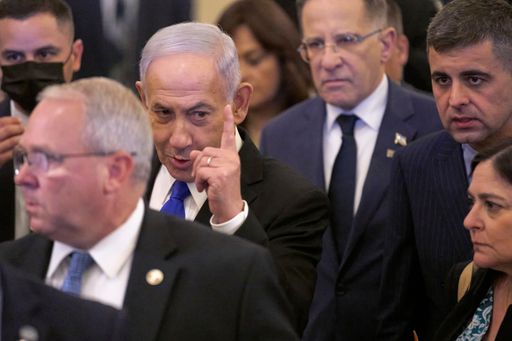Ceasefire negotiations between Israel and Hamas are ongoing, but remain caught up in a complex mix of demands. Diplomatic efforts by the US, Qatar, and Egypt are intensifying, though key issues like hostages, military withdrawal, and humanitarian aid access continue to delay a comprehensive agreement.
Here’s the latest on what’s happening.
Diplomatic progress and key meetings
A notable development occurred when Israeli Prime Minister Benjamin Netanyahu and US President Donald Trump held a 90-minute meeting in Washington to discuss a potential ceasefire and hostage deal in Gaza.
This meeting followed a Qatari delegation's engagement with senior White House officials, marking a renewed diplomatic momentum.
According to Sky News, a message was conveyed to Hamas through Dr Bishara Bahbah, a Palestinian-American intermediary, assuring them that Trump would prevent Israel from restarting the conflict.
This assurance appears to have convinced Hamas that the US would intervene to prevent Israel from unilaterally resuming hostilities. However, the final agreement hinges on the resolution of the presence of Israeli soldiers in Gaza.
The proposed framework includes a 60-day truce, humanitarian aid access, and a phased release of hostages and prisoners. Hamas has expressed readiness to commence talks immediately, contingent on guarantees regarding the cessation of Israeli military operations post-truce.
Trump’s Middle East envoy, Steve Witkoff, has indicated that talks are nearing resolution, with only one major issue unresolved.
Netanyahu stressed that the offensive in Gaza will continue until the Hamas’s military and governance capabilities are dismantled.

Hostage release and military withdrawals
Tel Aviv estimates that there are 50 hostages, including 20 living captives, in Gaza, while more than 10,400 Palestinians are being held in its prisons.
Under the proposed deal, Israeli forces would withdraw from some Gaza areas, enabling humanitarian aid and displaced Palestinians to return home.
However, Hamas demands a lasting ceasefire and full Israeli withdrawal before releasing all captives, while Israel insists on maintaining security control and completing its military objectives.
Ongoing ceasefire talks in Doha
Mediated talks in Doha remain cautiously optimistic but face hurdles. Israel demands the return of all hostages and the dismantling of Hamas before agreeing to a full ceasefire. Hamas, on the other hand, demands an end to hostilities as a precondition to releasing captives.
Humanitarian aid access remains a sticking point, as the war has resulted in immense loss of life — over 57,000 Palestinians and 1,200 Israelis — and displaced most of Gaza’s population.
Humanitarian crisis and aid blockades
Following the initial ceasefire phase, which saw a surge in aid shipments after months of blockade, Israel halted food and supply entries again in July.
Many countries condemned this move as a violation of humanitarian law, accusing Israel of using starvation as a weapon. Hamas accused Israel of attempting to sabotage the fragile truce. Even European countries are concerned about the shortage of food and medicine in Gaza.
The coming weeks are pivotal. While diplomatic momentum has brought the parties closer to an agreement than before, deep mistrust and diverging demands continue to hinder progress.
Both sides face intense international pressure to solidify a truce that ends hostilities and alleviates Gaza’s humanitarian emergency.
As ceasefire talks proceed, the world watches closely, hoping recent diplomatic efforts can prevent further bloodshed and suffering.



















